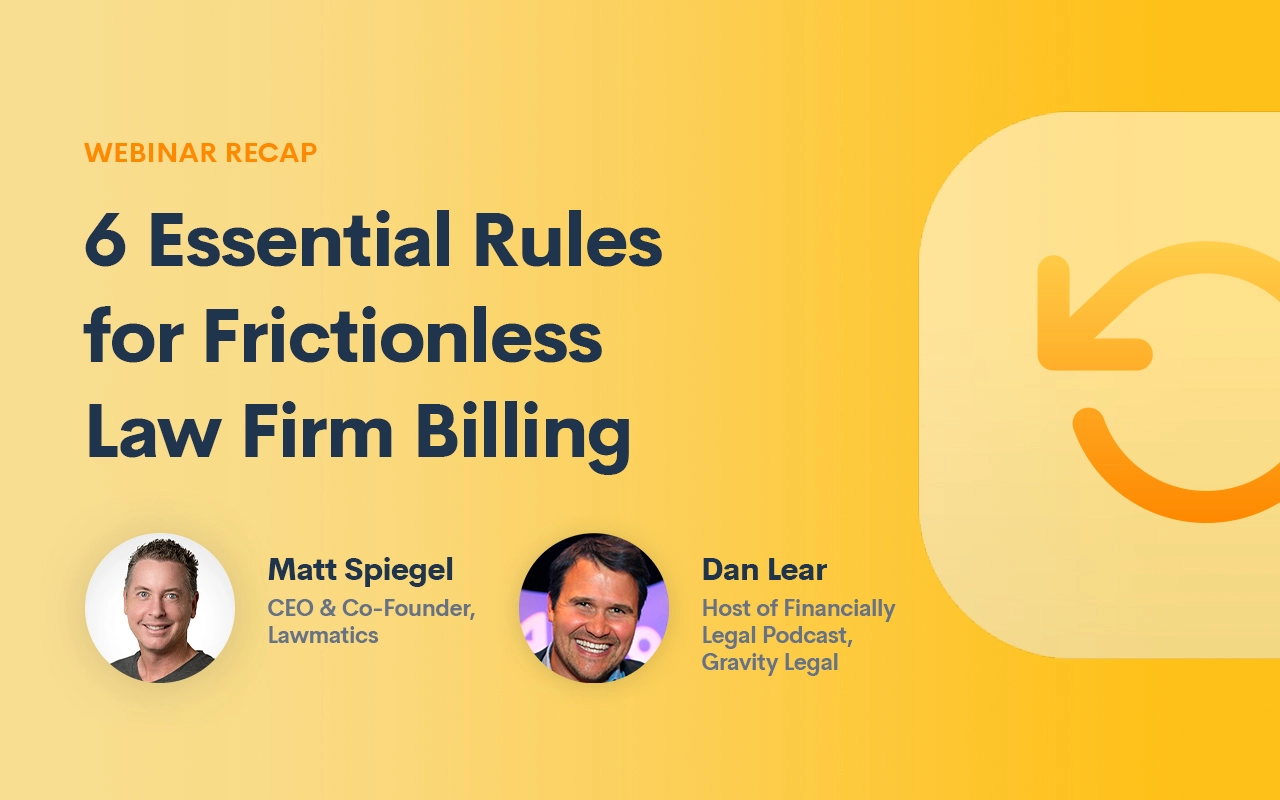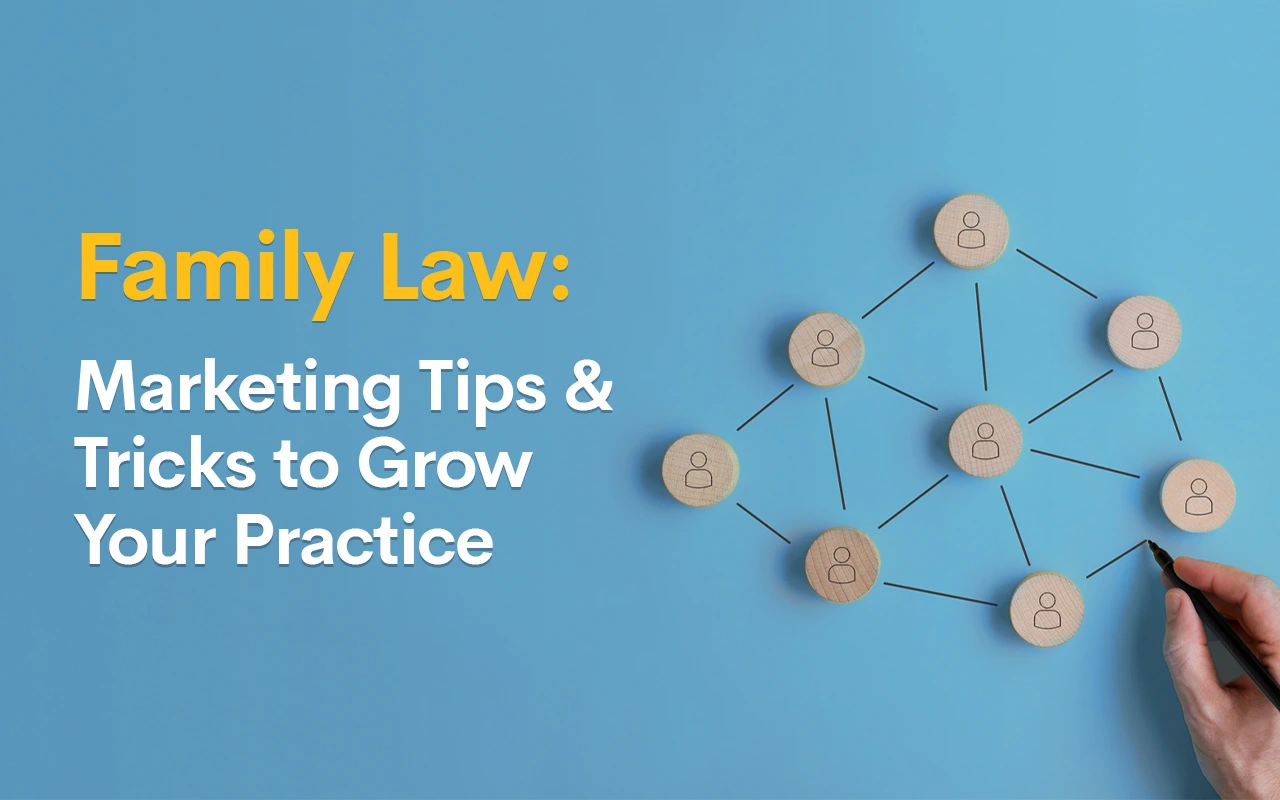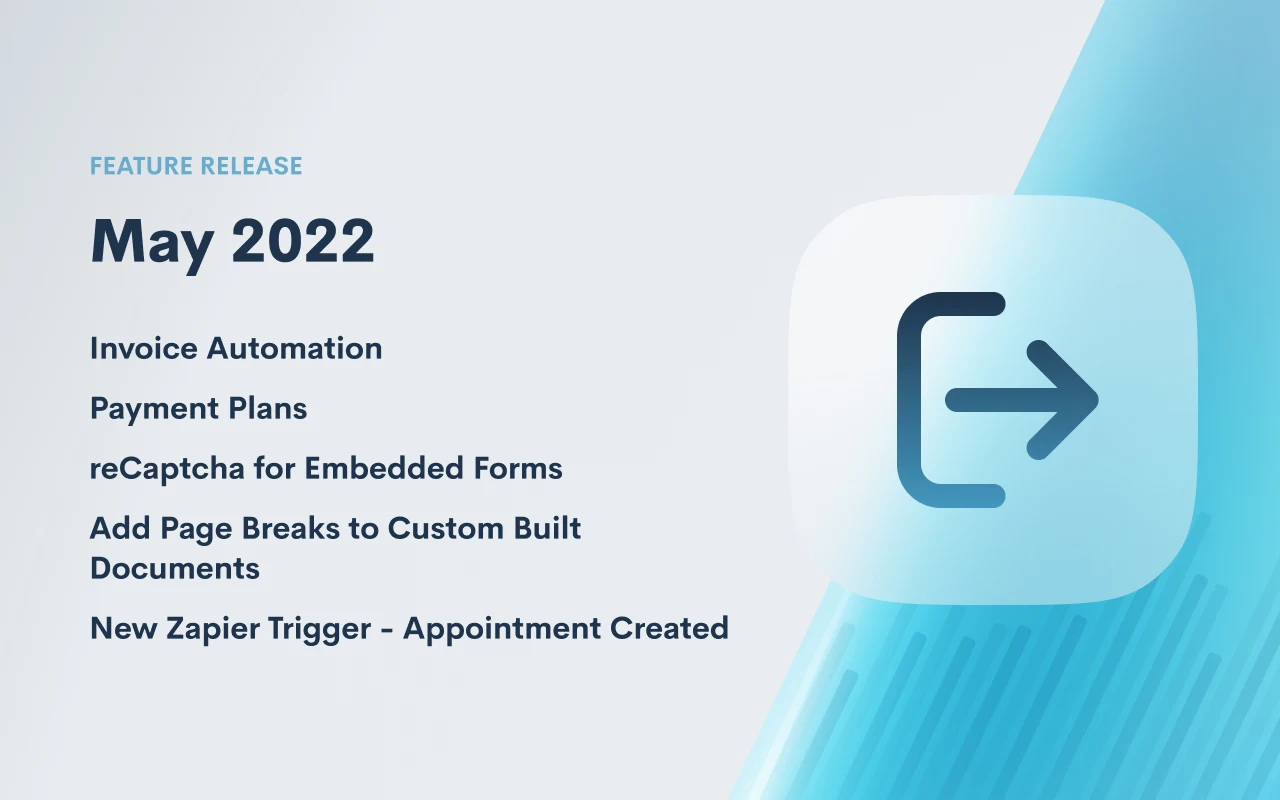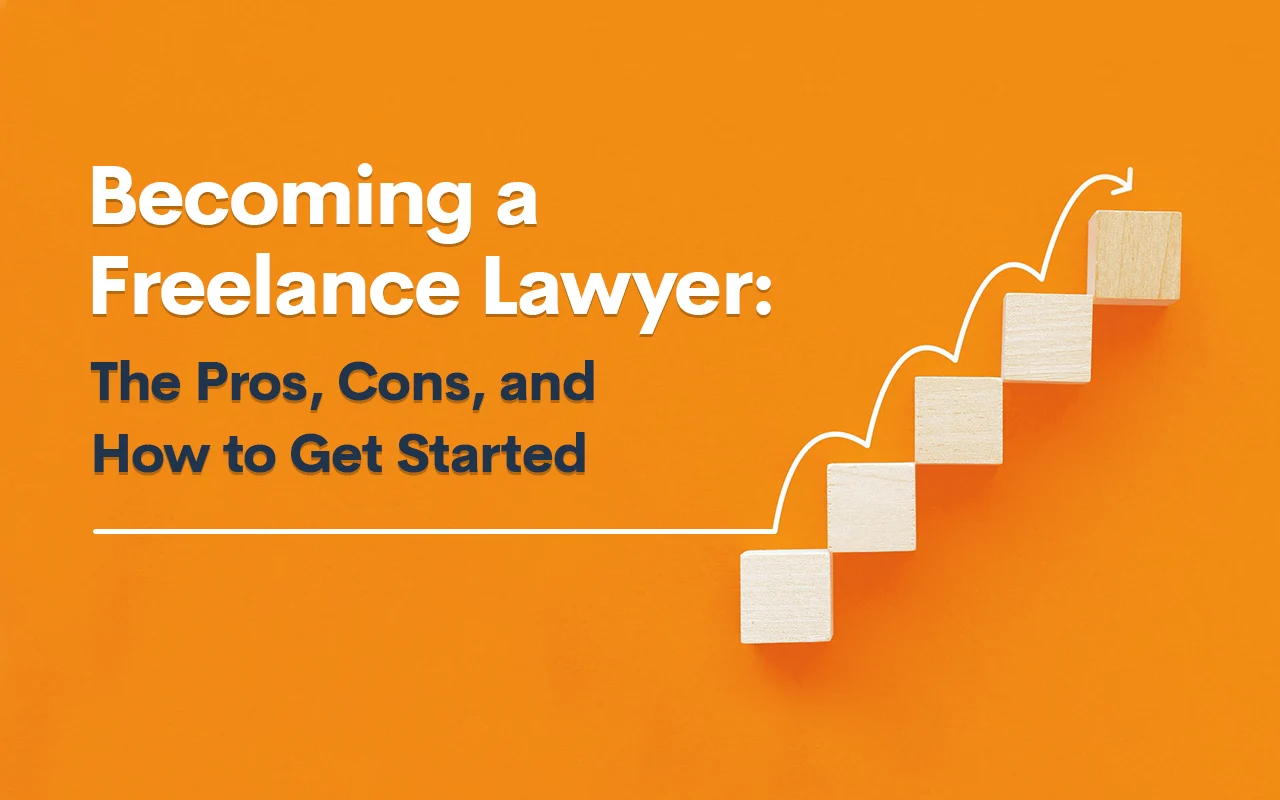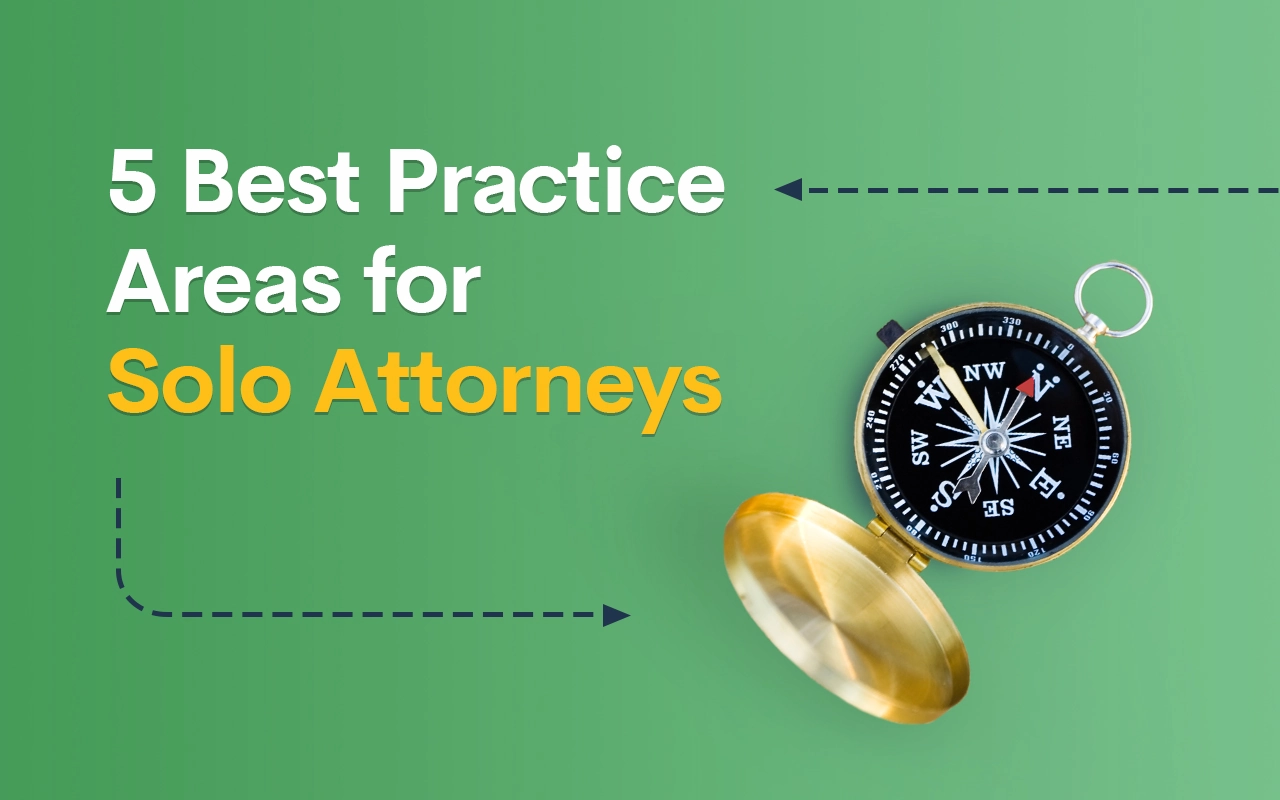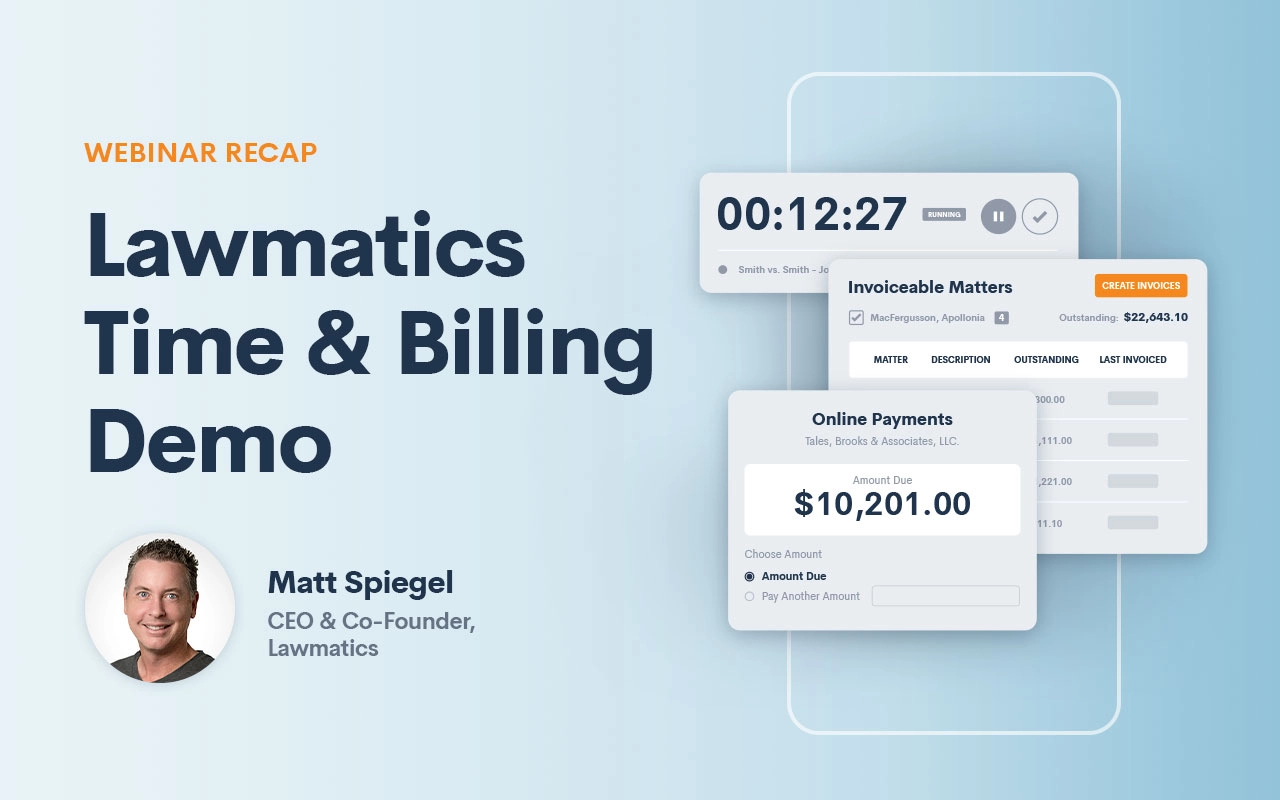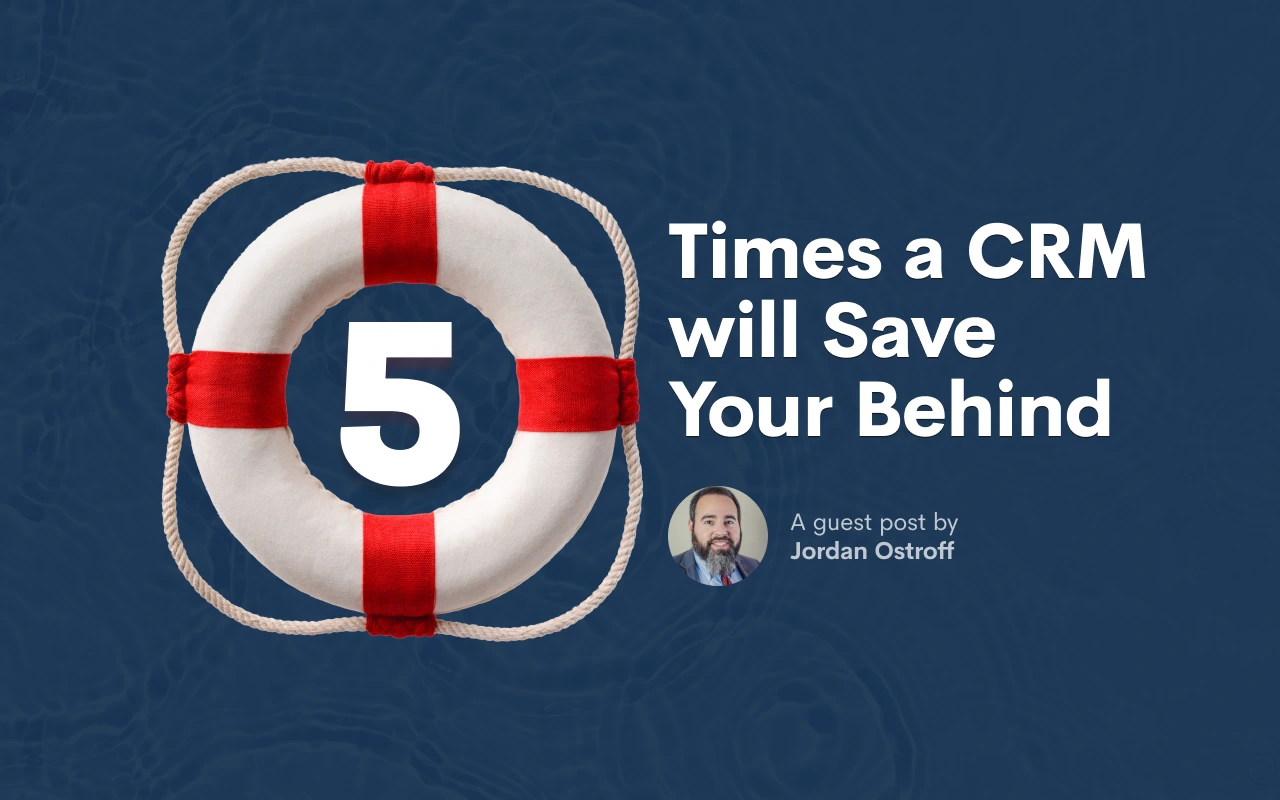You know what sucks? That every time I think of my wife telling me that she was pregnant with our son, I have to remember the whole story. Yes, I was immediately happy, but then pretty quickly I had to ask myself “how the f%&$^ are we going to manage this?”
We were already working 60-70 hours a week, $200,000 in firm debt, and trying to make it all work. It’s like we were drowning and also on fire and now someone wanted to hand us a baby.
Thankfully, this story has a super happy ending (or at least a super happy now) — a lot of it has to do with us finally learning what it takes to run a business and a HUGE part of that is using a CRM to save us time, make us money, and help us provide a better and better customer experience.
That’s why as soon as I started a fractional CMO company for lawyers, I knew we had to help them get setup in a similar manner to my firm, because there’s just SO much you can do with an awesome CRM like Lawmatics (which we still use at my firm and for our LegalEase intakes).
There are 1,000,000 things you can use this program for, so let’s break it into stages:
1.Tracking Leads
You know that feeling you get in your gut sometimes that a decision is right or wrong? And you can’t quite put your finger on why, but it FEELS that way?
Well, I hate to break it to you — but that’s a terrible way to run your business. Trust me on this, because I did it (see debt and sadness story above).
Let’s say you are running 50 different ad sets across 5 platforms. Which one is doing the best for you? What does best even mean? Well, a great CRM system software gives you those answers in real time.
Let’s say ad A goes to landing page A, which goes to contact form A which goes into Lawmatics. Then we rinse and repeat for the next 49 one (I have no idea what that last letter would be, maybe AX?)
Now Google Ad Manager will let us know about the impressions and click through rate, analytics will let us know about the performance on the landing page, and the contact form tells us about consults. Which is great, but viewed on way, a lead has NO value, it’s the hired client who funds your firm. So with Lawmatics and that contact form, we can seamlessly track which of those consults becomes a client.
Ad G might get us 50 consults, but only 3 hire. Ad Z might get us only 10 consults, but 9 hires. You don’t know until you track your leads ALL the way through to see which ones are actually the most cost effective. This can easily be a million dollar problem or solution.
2.Closing Leads
As the system is tracking all of this, you need to put in some time and effort to close those leads and get them into hired clients. Last I saw, Clio Legal Trends reported that 68% of lawyers don’t follow up with leads — AT ALL. Please don’t be one of those people.
What is more common for our potential clients is the HUGE ebb and flow from month to month. You’re not busy in May so you call all the leads back and stay on top of them, then you get busy in June so you stop doing that. Then you have no clients in July, rinse and repeat (if you haven’t already pulled your hair out from this).
Instead of relying solely upon yourself or your staff, flex some CRM muscle on this problem. Put together a drip campaign for all potential clients that goes over topics like:
Why they need a lawyer
The life cycle of a case
The great client reviews you get
Common mistakes people make in this situation
What makes your firm special
Why they should hire you
Common questions they have
War Stories you can ethically share
And many more…
By standardizing this follow up (bonus points if you change the drips by case type if you practice multiple areas of law), you get BETTER numbers from your ads, and can track better AND close more.
Maybe every 3 months you tweak your drip campaigns and see if you close more or less clients (you can always go back to the old way).
And, what do you do when they DON’T hire. Maybe you need a long term nurture campaign for those clients thinking about divorce but giving it one more shot, or the ones who want to pause their estate planning needs for another few months, or the business client wanting to give that vendor 30 more days to not pay the overdue bill, etc. You can automate a ton of that stuff to get older leads back into a consult or hiring at a later date.
3.Onboarding Clients
Okay, so now that you have that dialed in, you’ve got a steady flow of clients coming through the door (or the virtual door because COVID…)
And I will bet that there are some steps you do on EVERY case
- Estate planning clients might fill out a longer form on their assets
- Criminal defense clients might have to sign a waiver of appearance
- Real Estate clients might have to upload photos of the title or contract around the proper
- Family law clients might have to tell you the same story 15 times AND need you file 700 emergency motions because the other parents showed up 38 seconds late
I digress, you know what this means to your practice. So, how about instead of taxing yourself or your staff to send the same emails and forms OVER and OVER again, you instead made it totally automated.
And by doing this you can also add some other information to the client every few days for 30 days or so.
After someone hires you, they’re going to either 1) psychologically convince themselves that they’re smart for hiring you, or 2) immediately regret it. So let’s avoid 2.
Think about sending them:
- More social proof (great reviews)
- Numbers that make you look good (prior $$$ wins, # of cases you’ve handled, etc)
And also, you can:
- Send them your social media accounts to follow
- Give them a virtual tour of the office
- Explain to them what to expect moving forward
- Introduce the rest of your team
- Remind them not to talk about the case to the police, the insurance adjuster, etc
Whatever else makes sense to them to know now that they’re a client.
4.Doing The Actual Legal Work
This is very similar to the onboarding process. What are you doing all the time for the actual work on their case?
- For PI, they’re probably in treatment and you’re checking on that and requesting medical records
- For estate planning, you’re probably putting together some documents and then having a signing meeting
- For criminal law, you’re probably requesting discovery or setting depositions
So think about what the steps are that you do over and over again and create a new pipeline with those stages and tell Lawmatics to move your hired clients over there and set up automations to support that work. (pro-tip make sure your automations run on hired clients and not just PNC now).
You can even use the practice area field to change the pipeline by type of case if you’ve got multiple practice areas. Voila, even more time savings and an even smoother client experience.
And to be clear, I am not telling you to automate EVERYTHING. But by automating the easy stuff you have more time to be PERSONAL with each case and truly help move the needle for your clients because you’re not stuck spending 5 hours a case manually sending the same stuff by email one at time (or fax if that’s still your thing and this is the 1920s).
5.Doing Right By Your Alumni Clients
Eventually, after you do an AMAZING job on the actual legal work, the case closes and then what? Does the client never hear from you again? If that’s the case, you’re leaving a ton on the table.
Imagine how different your firm would be if every month you got 2-3 new happy client reviews. Imagine if every 2 clients became another case through repeat business or a referral. How would that change your firm? It would be amazing right? Well guess what, it is, and it’s possible for you if you nail this process in the CRM.
It starts with a closed case form. What last data points do you need to enter to help all your KPIs line up? Maybe it’s settlement amount, total fee billed, length of time the case took, # of hours spent on it, etc. Use that form being filled out to move clients to a closed case pipeline.
Now you can:
- Send them the info they need once the case is closed (where to report to probation, how to fund their trust, a reminder to turn on their power and water in their new house, etc)
- Check in with them at certain intervals to make sure they remember you and know that you care about them.
- Ask them to leave you a review.
- Invite them to your annual party (when those are a thing again).
- Send them a happy note on the anniversary of their case.
Remarket to them: maybe you can do an early termination of their probation at a certain time, maybe they need their trust updated every few years, maybe they need a modification on time sharing once they get a new job, etc.
So stay in touch, stay top of mind, and truly care, and you’ll see a ton of extra success.
And let’s be honest, we are just scratching the surface of it here. These are probably the 5 most common stages to use a legal CRM system, but there are millions of ideas we didn’t even touch inside of those stages. So really take some time and sketch out what the perfect flow from lead to client to former client to referral source looks like for you and your firm. And then start identifying where you can keep that organized and following with the support of Lawmatics.
And if you’re not sure what to do or don’t want to spend your time on it, let’s chat!

